Descriptions, drawings and photographs of the utensils and processes used for making butter and cheese were also recorded in the Survey. A large amount of material was gathered in Yorkshire. The photographic record of Mrs M. E. Scott making butter and cheese at her home in West Stonesdale, North Yorkshire in 1963 is particularly descriptive of the time-consuming process of making dairy products by hand.
The butter-making process
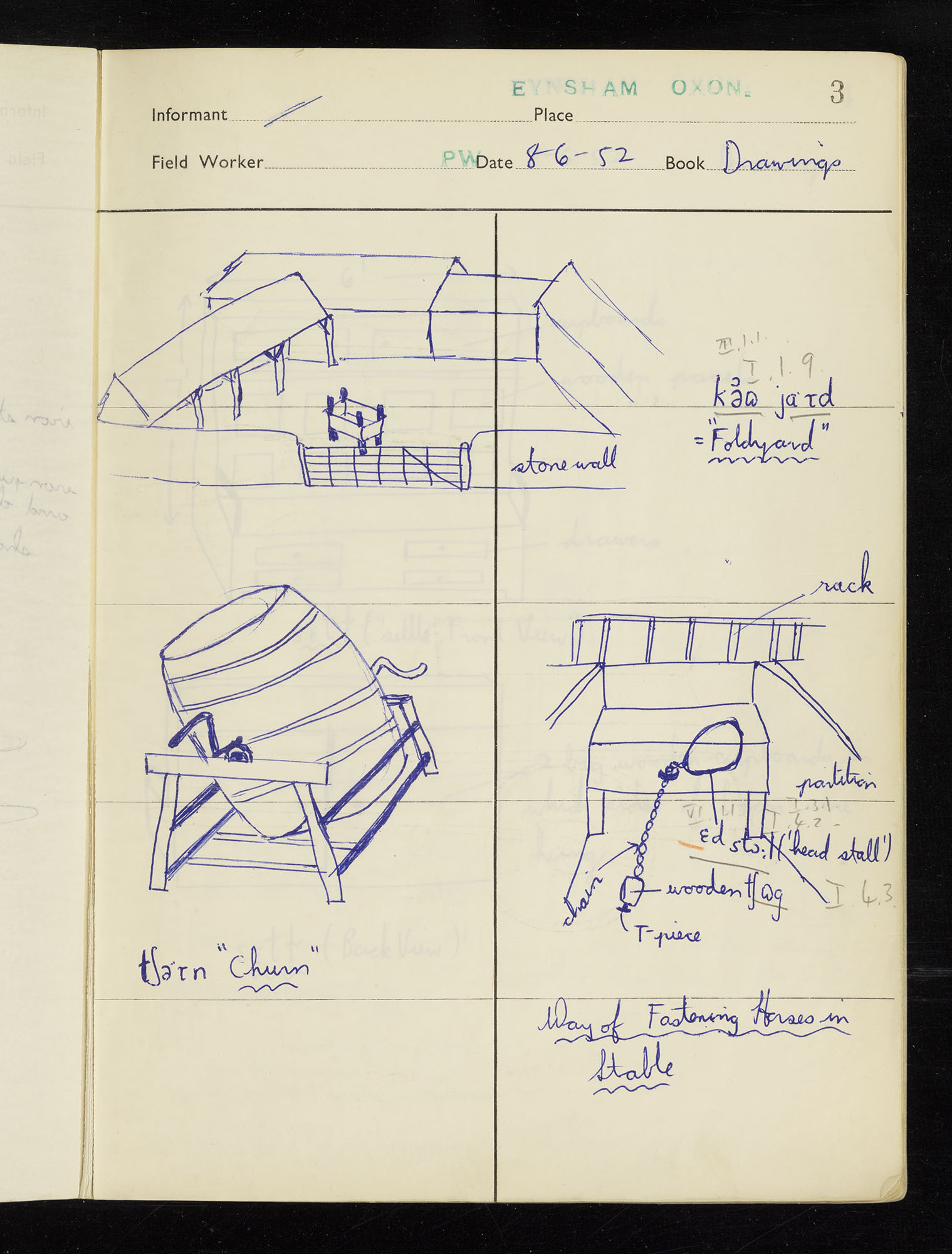
First cream is separated from the milk using a wooden butter churn.
'Notes [Eynsham Response Book]’ (LAVC/SED/2/2/25/4/10) by Peter Wright.
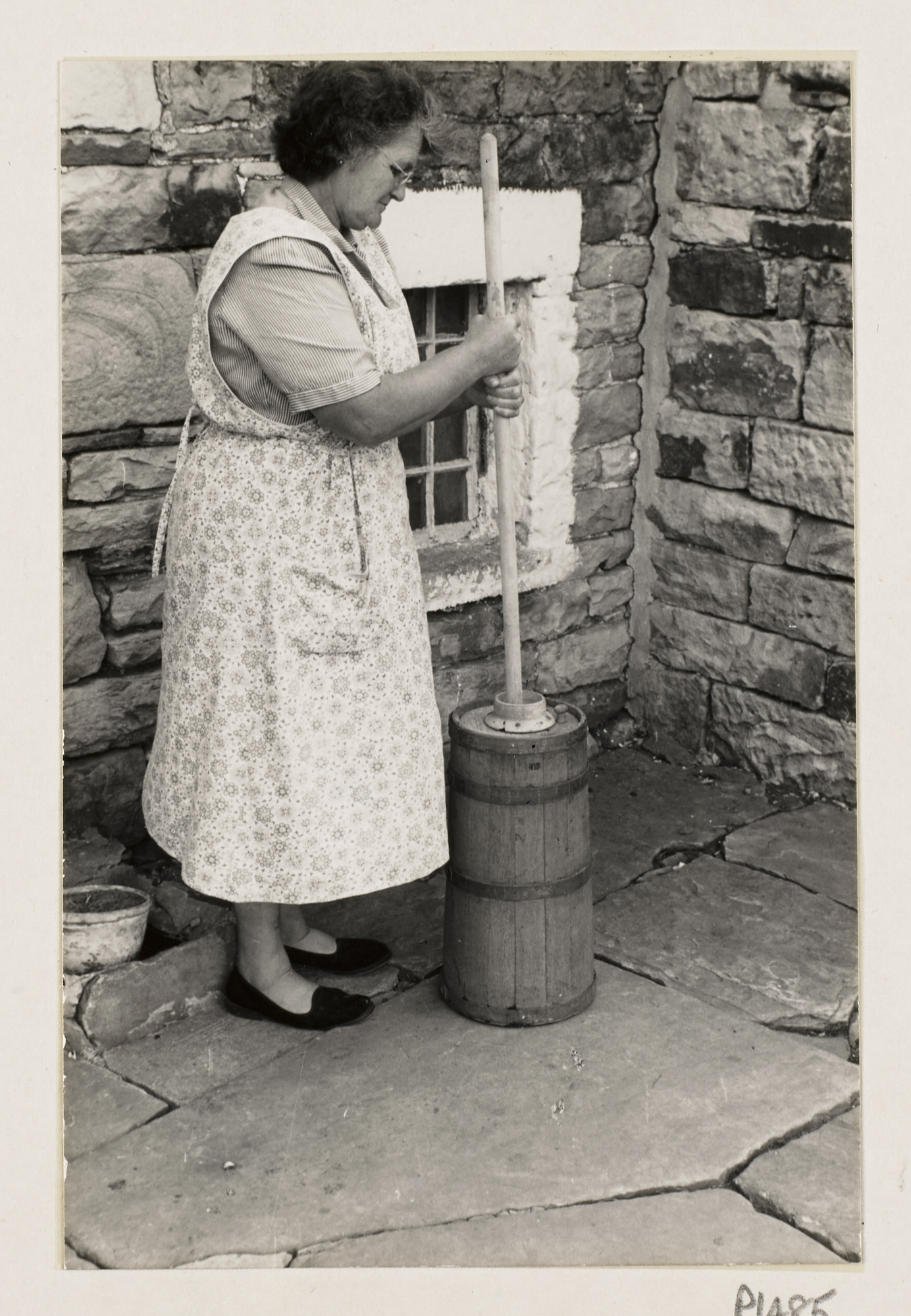
The cream is then churned by vigorously working a long wooden handle up and down in a clay churn until butter is formed.
‘Buttermaking: Churning' (LAVC/PHO/P1485) by Werner Kissling.
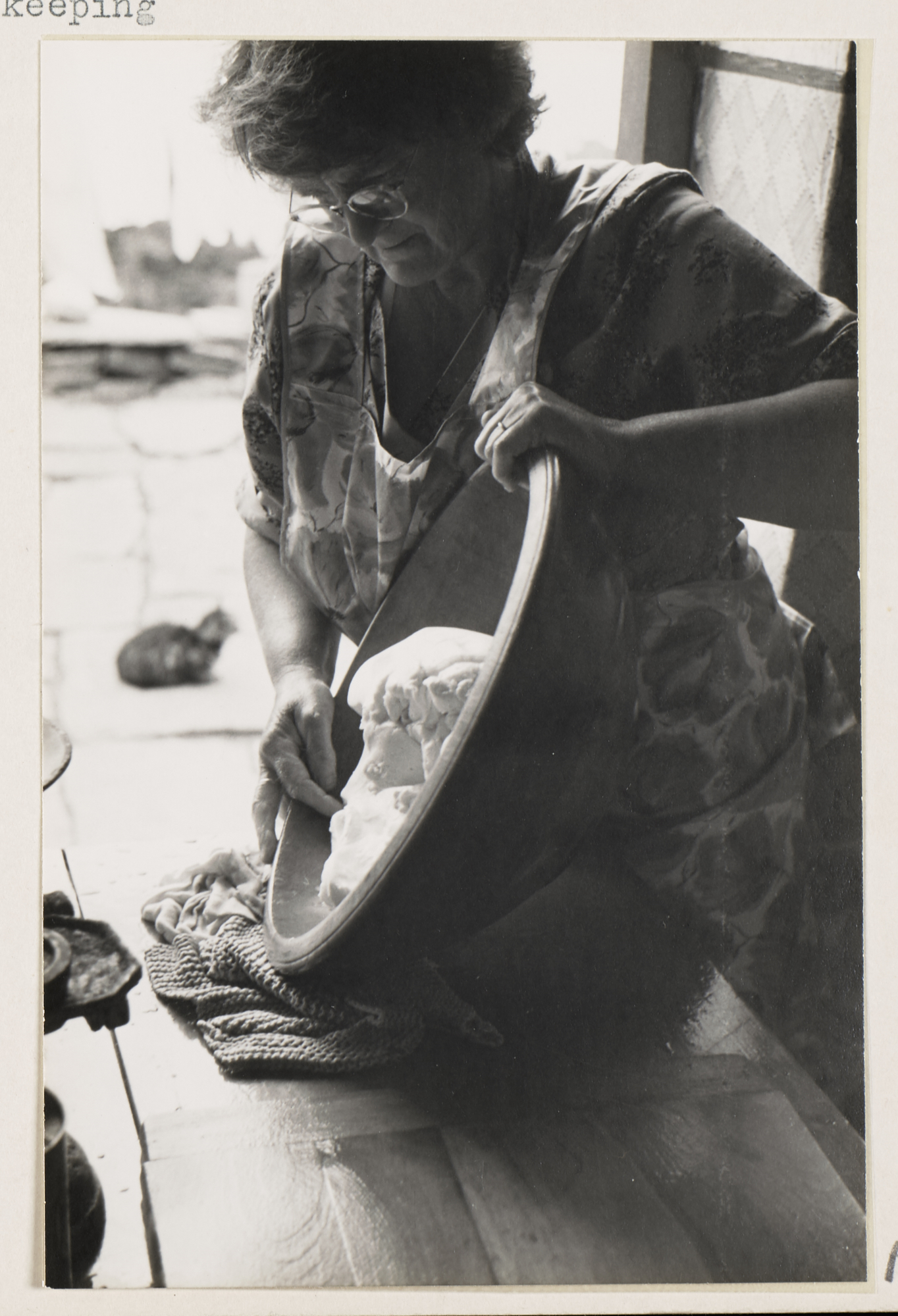
The butter is then gently squeezed against the side of a wooden butter bowl to wash out all of the butter milk, which reduces the butter’s shelf life.
‘Buttermaking: Washing Out Buttermilk’ (LAVC/PHO/P1493) by Werner Kissling.

The butter is then rolled with both hands on a wooden board to get all of the air out and make a close texture.
‘Buttermaking: Rolling Butter’ (LAVC/PHO/P1499) by Werner Kissling.
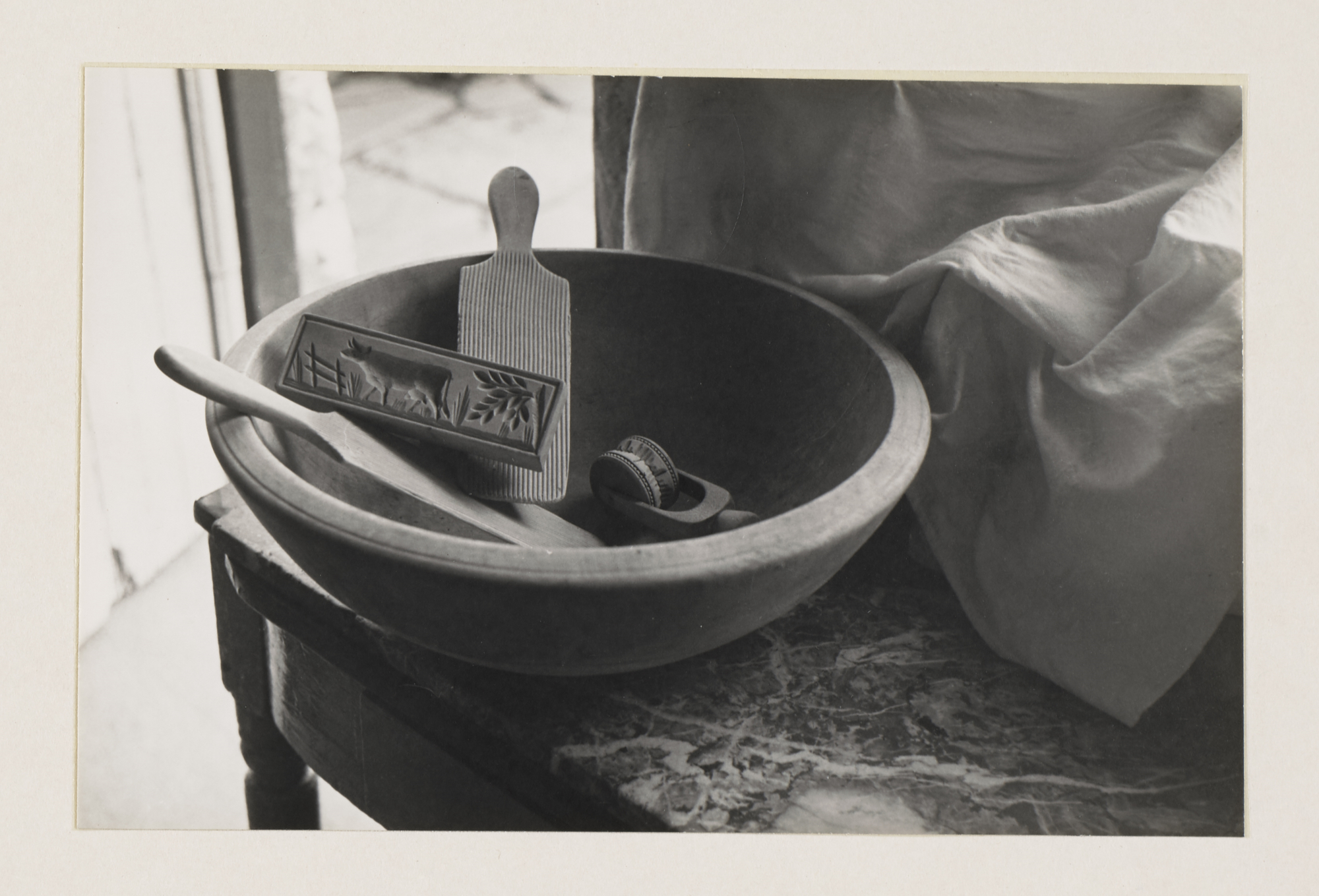
Buttermaking utensils in West Stonedale
‘Buttermaking Utensils.’ (LAVC/PHO/P1488)
by Werner Kissling.
Quite a lot of hard work for a humble block of butter, but an essential skill to learn when living in a time or location which meant a trip to the shops was not an option.
The cheese-making process
The cheese-making process, as documented at Mrs Scott’s in North Yorkshire in 1963, is equally as involved as butter-making.
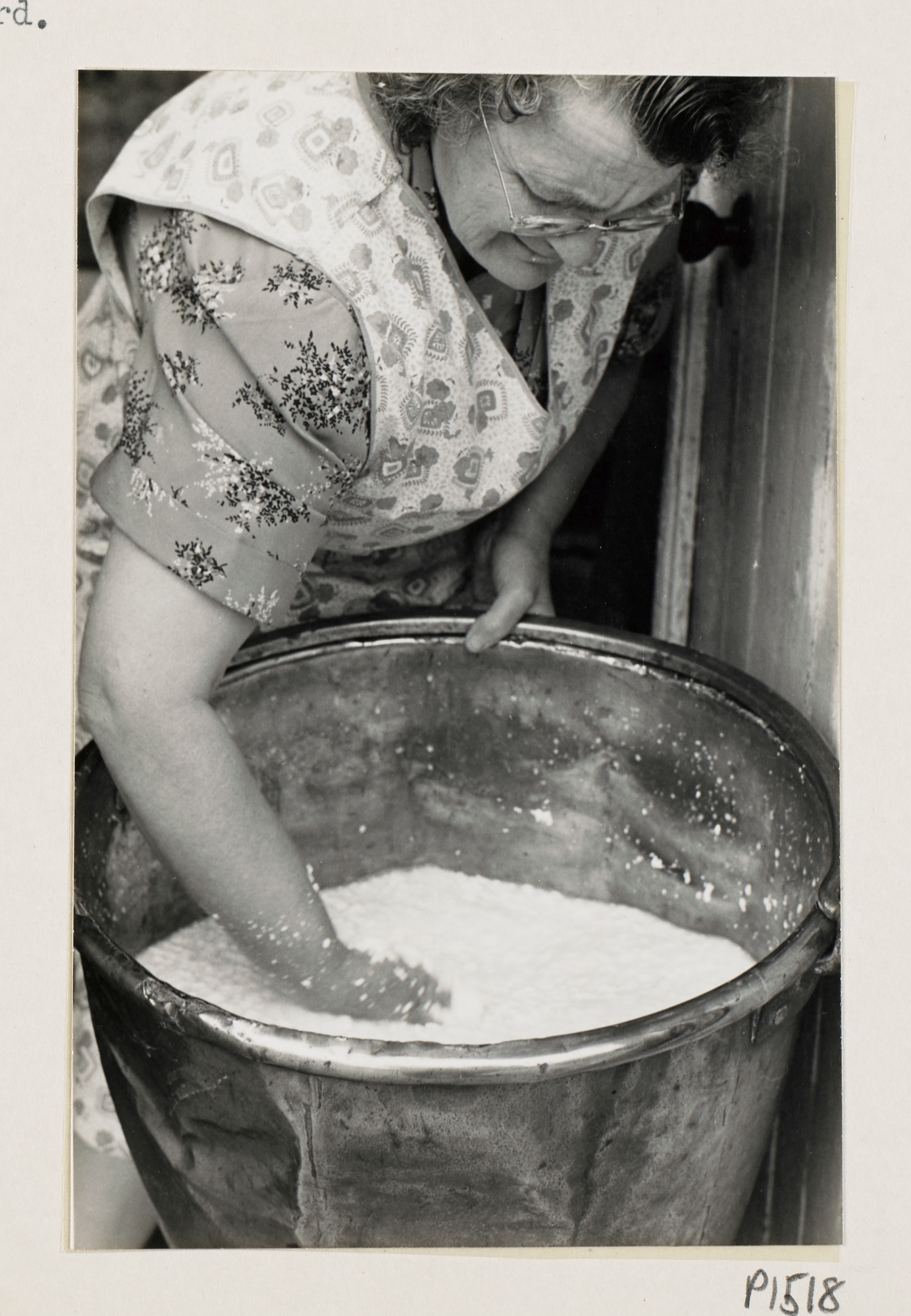
First the whey is removed from milk mixed with rennet using a wire curd cutter.
‘Cheesemaking: Removing the Whey’ (LAVC/PHO/P1518) by Werner Kissling.

Dry curd is then removed from a copper cheese kettle and wrapped in a cheese cloth.
'Cheesemaking: Putting Curd into a Cheesecloth’ (LAVC/PHO/P1526) by Werner Kissling.
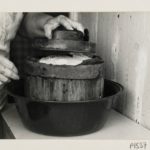
The curd is then crumbled into a cheeseput or vat. The sinker, or lid, is pressed down on top of the curd.
‘Cheesemaking: Crumbling the Curd’ (LAVC/PHO/P1537) by Werner Kissling.
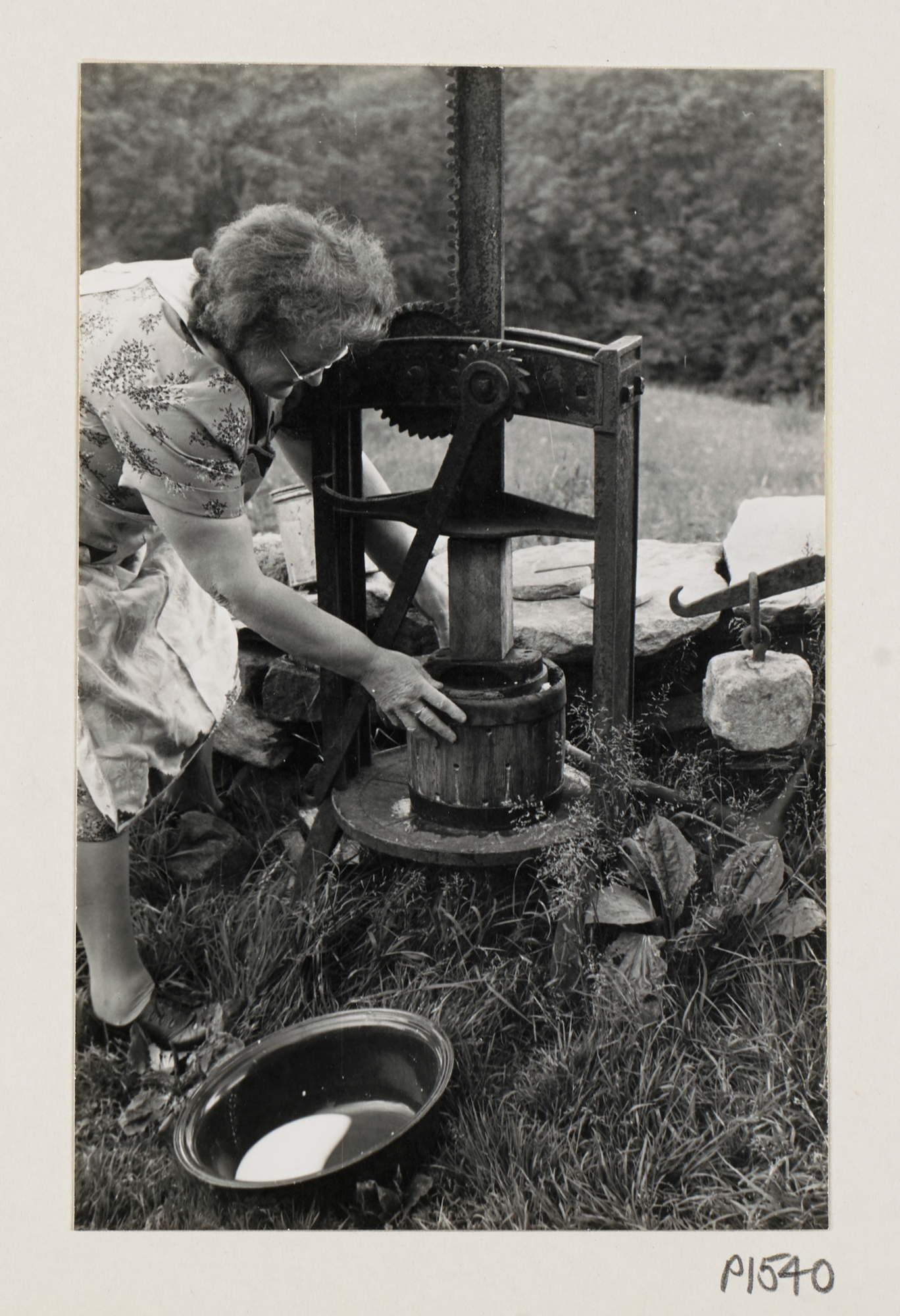
Cheese press in West Stonesdale.
‘Cheesemaking: Cheese Press’ (LAVCPHO/P1540) by Werner Kissling.
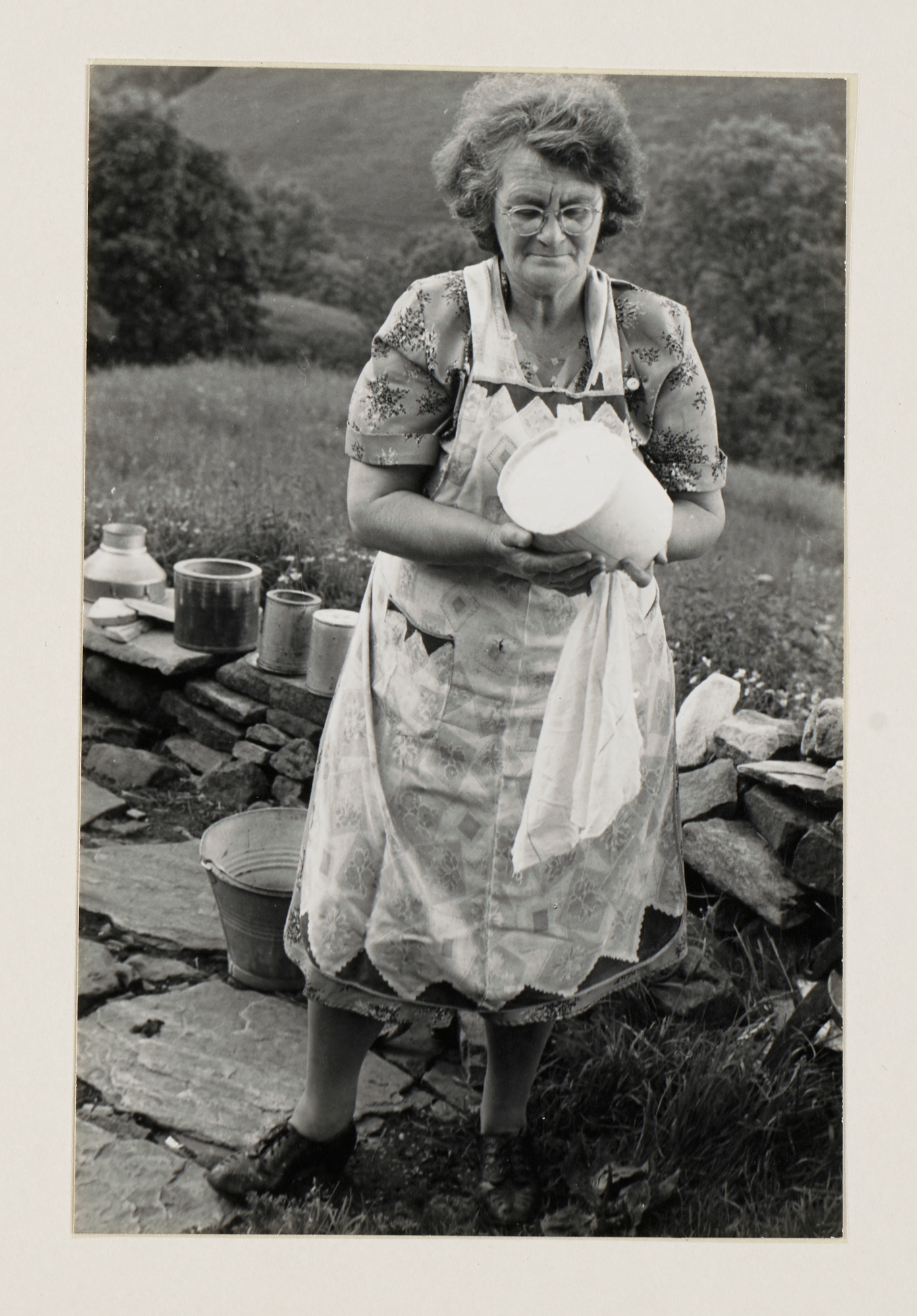
After it has been pressed overnight, the curd is turned and put into a dry cheesecloth before being returned to the press. The curd is pressed for a total of 2 days.
‘Cheesemaking: Turning the Curd’ (LAVC/PHO/P1541) by Werner Kissling.



